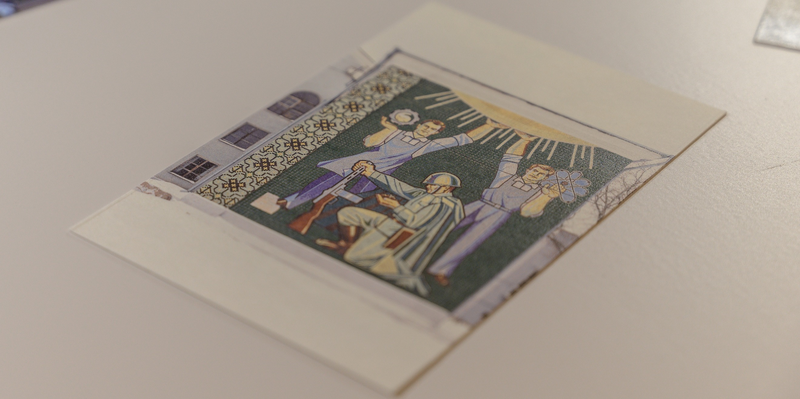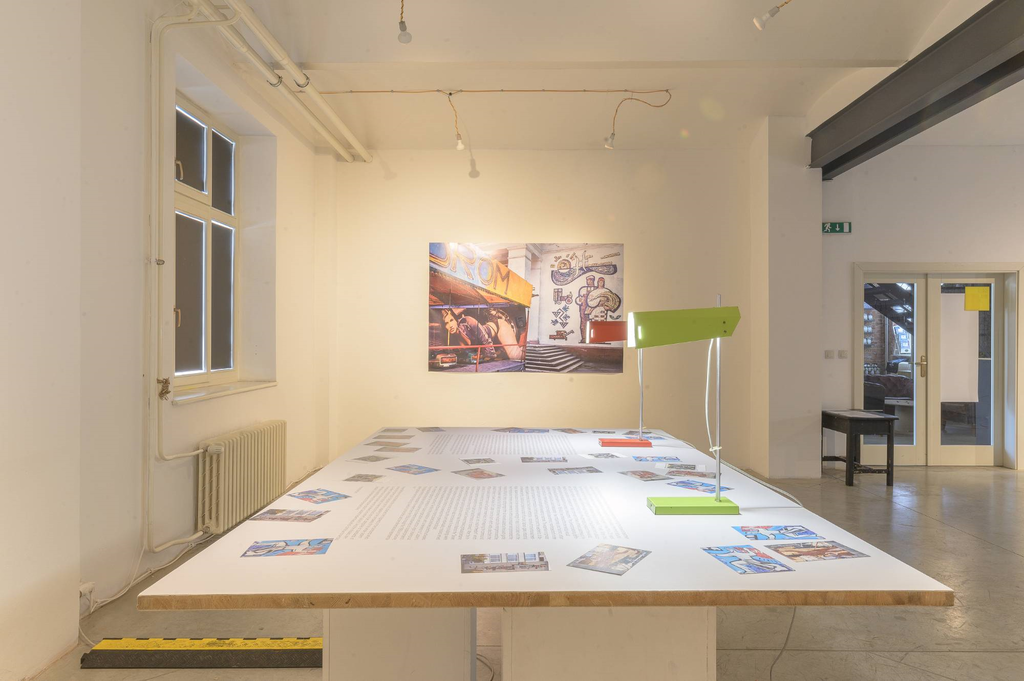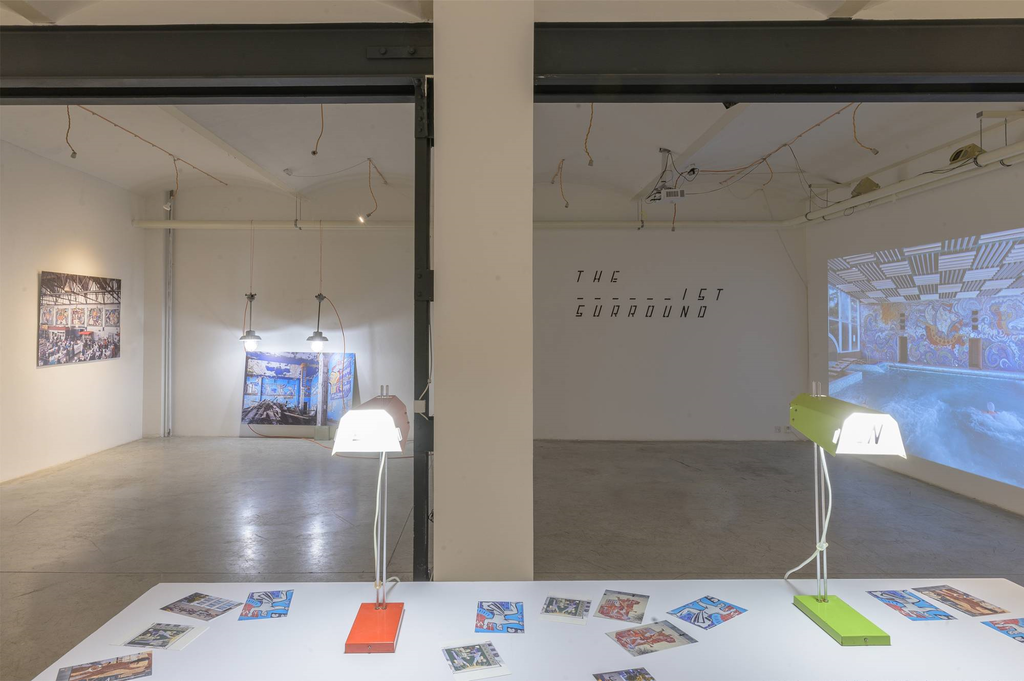SK Modelovanie predstavy o povojnovom období je vždy komplexný intelektuálny podnik vyžadujúci si statočnosť a vytrvalosť bádateľov. Ani dnešný historický odstup neuľahčuje snahu pochopiť široké kontexty denného života ľudí, ktorí za 20 rokov zažili skokovú zmenu od vojnovej devastácie ku kozmickým letom na obrazovkách domácich TV prijímačov. Keď sa tento tréning predstavivosti skoncentruje okolo regiónu Sovietskeho zväzu, akosi prirodzene sa vynára pojem “socialistická modernita,” dostatočne všeobjímajúco sa javiaca diskurzívna barlička.
Modernita je nepochybne ťažko skúšaný pojem, ktorý zároveň ťažko skúša všetkých, čo sa na prácu s ním podujmú. Mnoho prominentných mysliteľov sa pokúsilo nájsť jeho čiastkové významy zvedavou konceptualizáciou niektorých zložiek spoločenského vývoja. Na strane druhej, ak by sme predstierali, že socialistická modernita je všeobjímajúca definícia obdobia 50. a 60. rokov, narazili by sme na nekonzistentné formatívne tendencie vo sférach politickej a kultúrnej liberalizácie, vzostupu turizmu, urbánnej u rurálnej výstavby, masovej produkice ubytovacích kapacít a technologického pokroku manifestovaného či už náhlou prítomnosťou jadrovej energie, či práčok v domácnostiach. Nárast spotrebiteľského správania bol sprevádzaný nástupom technologickej estetiky a estetiky domáceho života a každodennosti. Vzťahujúc sa kontext dobovej umeleckej produkcie, výstay (či uť voľného výtvarného umenia alebo dizajnu) sa stali platformou nadnárodnej výmeny myšlienok a postrehov o tomto novom svete.
Socialistická modernita 50. a 60. rokov priniesla faktory hrajúce do karát mozaikovej renesancii na území sovietskej Ukrajiny. Tom Cubbin popisuje dobové umelecké povolanie ako misiu (znovu)vytvárania komunistického okolia (communist surround) ako “priestoru ktorý podporuje intelektuálnu a kreatívnu slobodu,” komponenty považované za “esenciálne pre duchovnú transformáciu ľudstva.” Po uvedení typizovaných konštrukčných stavebných systémov v polovici 50. rokov sa mozaiky postupne stali prirodzeným odlišovacím znamením v novom druhu mestského priestoru, zhmotňujúcom snahy o vytvorenie čo najlepších podmienok pre prácu i oddych “sovietskeho človeka.” Mnoho budov vzniklo na základe typizovaných projektov, zdôrazňujúc utilitu nad individualitou. Umelci slúžili ako autori tejto “mozaikovej vrstvy” kompenzujúcej v kontrolovanej forme práve tento deficit individuality v prostredí.
Názov výstavy, referencia na Cubbinov termín, sa hrá so vzťahom medzi charakteristikami prostredia a monumentálnym umením v ňom. Vynecháva však politický slovotvorný základ, namiesto neho chce upriamiť pozornosť na prítomnosť univerzálnych utopických čŕt prostredia, ktoré v danej dobe vzniklo. Výstava prevádza návštevníka Ukrajinou od 50. do 80. rokov, snažiac sa vyrátiť predstavy o monolitickej povahe sovietskeho umenia v celom jeho trvaní. Yevgen Nikiforov dlhodobo zbiera fragmenty sovietskeho okolia, nesúce v sebe náznaky spoločne vytvárajúce obraz o komplexnosti éry svojho vzniku. Ako raz poznamenal Frederic Jameson, modernita pozostáva menej zo sérií kategórií a štandardov, než z príbehov, ktoré si o nej rozprávame. Mozaiky sú nepochybne bránami k príbehom sovietskych modernít, ktoré sú naďalej rozprávané, prediskutovávané a reinterpretované.
EN Imagining the post-war period is always an intellectual enterprise inviting the brave to test their mettle. Even now, from a considerable historical distance, it is hard to wrap the mind around the conditions which structured the daily life of the people who leaped in less than 20 years from World War II to the launch of spacecraft, watched through domestic TV sets. When this training of the imagination needs to follow the regional peculiarities of the Soviet Union, a buzzword “Socialist modernity” appears as a promising tool in the attempts to explain the world.
Modernity is undoubtedly a contested term. Many prominent thinkers strive to address it, inventing inquisitive conceptualizations of society’s development. The all-encompassing definition of post-war Socialist modernity in the 1950-60s (if we pretend the one exists) would include inconsistent political and cultural liberalization, rise of diplomacy and tourism, urban and rural construction, mass housing, and technological advancement, manifested both in the presence of atomic power and durable goods like washing machines. The expansion in private consumption accompanied the introduction of technical aesthetics and the aesthetics of domestic life. Speaking precisely about the art scene, exhibitions — not only of conventional mediums like easel painting, sculpture, and graphics but also of furniture, fashion, glass, industrial design — became the platforms for the transnational exchange of ideas. It coincided with the rise of neoproductivist theories, which presented an artist as a producer and promoted the mingling of life and art, being a spitting image of the call once articulated by the avant-garde movement.
Socialist modernity in the 1950-60s comprised the factors the emergence and the spread of mosaics in Soviet Ukraine. Tom Cubbin coins the term which wittily describes the artistic occupation pertinent to post-war Socialist modernities: (re)-imagining the communist surround, an “environment that supports forms of intellectual and creative freedom” which considered as “essential components in the spiritual transformation of mankind.” After the introduction of typical construction in the mid-1950s in Soviet Ukraine, mosaics gradually became a distinct element of this peculiar spatial organization which was meant to fashion the “Soviet citizen” while providing the best conditions both for labor and leisure. As many buildings were erected in accordance to typical projects emphasizing utility over individuality, mosaics served to rehearse the latter, marking a function of a dwelling in the general landscape. In this context, the activities of Ukrainian artists who created, placed, and executed the artworks translated into shaping the surround.
The title of this exhibition, with a reference to Cubbin’s term, intends to highlight the connection of space organization and artistic vigor, leaving out the precise political designation and thus pointing to shared tentativeness of utopian projects. The display intends to choreograph the viewers from the 1950s through the 1980s in Ukraine, defying shallow scenarios reducing Soviet art to monolithic and one-dimensional representation. Yevgen Nikiforov, the artist behind the script, collected the fragments of the surround which possess the potency of a diagnostic site for unpacking the complexity of the whole system. As Frederic Jameson once noticed, modernity consists less of set categories or standards of development than of the stories we tell ourselves and others about it. And the mosaics are definitely insightful tokens of the stories about Socialist modernities which continue to be told, debated, and reinterpreted at the present time.
Polina Baitsym
Polina Baitsym a Yevgen Nikiforov: THE _____IST SURROUND
kurátor Samuel Velebný
vernisáž: št 09.7. 2020 o 19:00
Trvanie výstavy: 9.7. 2020 – 14.8. 2020 v čase 15:00 – 20:00



SK Modelovanie predstavy o povojnovom období je vždy komplexný intelektuálny podnik vyžadujúci si statočnosť a vytrvalosť bádateľov. Ani dnešný historický odstup neuľahčuje snahu pochopiť široké kontexty denného života ľudí, ktorí za 20 rokov zažili skokovú zmenu od vojnovej devastácie ku kozmickým letom na obrazovkách domácich TV prijímačov. Keď sa tento tréning predstavivosti skoncentruje okolo regiónu Sovietskeho zväzu, akosi prirodzene sa vynára pojem “socialistická modernita,” dostatočne všeobjímajúco sa javiaca diskurzívna barlička.
Modernita je nepochybne ťažko skúšaný pojem, ktorý zároveň ťažko skúša všetkých, čo sa na prácu s ním podujmú. Mnoho prominentných mysliteľov sa pokúsilo nájsť jeho čiastkové významy zvedavou konceptualizáciou niektorých zložiek spoločenského vývoja. Na strane druhej, ak by sme predstierali, že socialistická modernita je všeobjímajúca definícia obdobia 50. a 60. rokov, narazili by sme na nekonzistentné formatívne tendencie vo sférach politickej a kultúrnej liberalizácie, vzostupu turizmu, urbánnej u rurálnej výstavby, masovej produkice ubytovacích kapacít a technologického pokroku manifestovaného či už náhlou prítomnosťou jadrovej energie, či práčok v domácnostiach. Nárast spotrebiteľského správania bol sprevádzaný nástupom technologickej estetiky a estetiky domáceho života a každodennosti. Vzťahujúc sa kontext dobovej umeleckej produkcie, výstay (či uť voľného výtvarného umenia alebo dizajnu) sa stali platformou nadnárodnej výmeny myšlienok a postrehov o tomto novom svete.
Socialistická modernita 50. a 60. rokov priniesla faktory hrajúce do karát mozaikovej renesancii na území sovietskej Ukrajiny. Tom Cubbin popisuje dobové umelecké povolanie ako misiu (znovu)vytvárania komunistického okolia (communist surround) ako “priestoru ktorý podporuje intelektuálnu a kreatívnu slobodu,” komponenty považované za “esenciálne pre duchovnú transformáciu ľudstva.” Po uvedení typizovaných konštrukčných stavebných systémov v polovici 50. rokov sa mozaiky postupne stali prirodzeným odlišovacím znamením v novom druhu mestského priestoru, zhmotňujúcom snahy o vytvorenie čo najlepších podmienok pre prácu i oddych “sovietskeho človeka.” Mnoho budov vzniklo na základe typizovaných projektov, zdôrazňujúc utilitu nad individualitou. Umelci slúžili ako autori tejto “mozaikovej vrstvy” kompenzujúcej v kontrolovanej forme práve tento deficit individuality v prostredí.
Názov výstavy, referencia na Cubbinov termín, sa hrá so vzťahom medzi charakteristikami prostredia a monumentálnym umením v ňom. Vynecháva však politický slovotvorný základ, namiesto neho chce upriamiť pozornosť na prítomnosť univerzálnych utopických čŕt prostredia, ktoré v danej dobe vzniklo. Výstava prevádza návštevníka Ukrajinou od 50. do 80. rokov, snažiac sa vyrátiť predstavy o monolitickej povahe sovietskeho umenia v celom jeho trvaní. Yevgen Nikiforov dlhodobo zbiera fragmenty sovietskeho okolia, nesúce v sebe náznaky spoločne vytvárajúce obraz o komplexnosti éry svojho vzniku. Ako raz poznamenal Frederic Jameson, modernita pozostáva menej zo sérií kategórií a štandardov, než z príbehov, ktoré si o nej rozprávame. Mozaiky sú nepochybne bránami k príbehom sovietskych modernít, ktoré sú naďalej rozprávané, prediskutovávané a reinterpretované.
EN Imagining the post-war period is always an intellectual enterprise inviting the brave to test their mettle. Even now, from a considerable historical distance, it is hard to wrap the mind around the conditions which structured the daily life of the people who leaped in less than 20 years from World War II to the launch of spacecraft, watched through domestic TV sets. When this training of the imagination needs to follow the regional peculiarities of the Soviet Union, a buzzword “Socialist modernity” appears as a promising tool in the attempts to explain the world.
Modernity is undoubtedly a contested term. Many prominent thinkers strive to address it, inventing inquisitive conceptualizations of society’s development. The all-encompassing definition of post-war Socialist modernity in the 1950-60s (if we pretend the one exists) would include inconsistent political and cultural liberalization, rise of diplomacy and tourism, urban and rural construction, mass housing, and technological advancement, manifested both in the presence of atomic power and durable goods like washing machines. The expansion in private consumption accompanied the introduction of technical aesthetics and the aesthetics of domestic life. Speaking precisely about the art scene, exhibitions — not only of conventional mediums like easel painting, sculpture, and graphics but also of furniture, fashion, glass, industrial design — became the platforms for the transnational exchange of ideas. It coincided with the rise of neoproductivist theories, which presented an artist as a producer and promoted the mingling of life and art, being a spitting image of the call once articulated by the avant-garde movement.
Socialist modernity in the 1950-60s comprised the factors the emergence and the spread of mosaics in Soviet Ukraine. Tom Cubbin coins the term which wittily describes the artistic occupation pertinent to post-war Socialist modernities: (re)-imagining the communist surround, an “environment that supports forms of intellectual and creative freedom” which considered as “essential components in the spiritual transformation of mankind.” After the introduction of typical construction in the mid-1950s in Soviet Ukraine, mosaics gradually became a distinct element of this peculiar spatial organization which was meant to fashion the “Soviet citizen” while providing the best conditions both for labor and leisure. As many buildings were erected in accordance to typical projects emphasizing utility over individuality, mosaics served to rehearse the latter, marking a function of a dwelling in the general landscape. In this context, the activities of Ukrainian artists who created, placed, and executed the artworks translated into shaping the surround.
The title of this exhibition, with a reference to Cubbin’s term, intends to highlight the connection of space organization and artistic vigor, leaving out the precise political designation and thus pointing to shared tentativeness of utopian projects. The display intends to choreograph the viewers from the 1950s through the 1980s in Ukraine, defying shallow scenarios reducing Soviet art to monolithic and one-dimensional representation. Yevgen Nikiforov, the artist behind the script, collected the fragments of the surround which possess the potency of a diagnostic site for unpacking the complexity of the whole system. As Frederic Jameson once noticed, modernity consists less of set categories or standards of development than of the stories we tell ourselves and others about it. And the mosaics are definitely insightful tokens of the stories about Socialist modernities which continue to be told, debated, and reinterpreted at the present time.
Polina Baitsym
Polina Baitsym a Yevgen Nikiforov: THE _____IST SURROUND
kurátor Samuel Velebný
vernisáž: št 09.7. 2020 o 19:00
Trvanie výstavy: 9.7. 2020 – 14.8. 2020 v čase 15:00 – 20:00
Ticketing and website by EventHub.fm